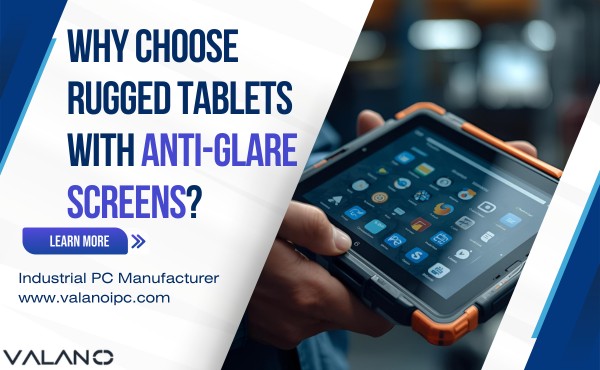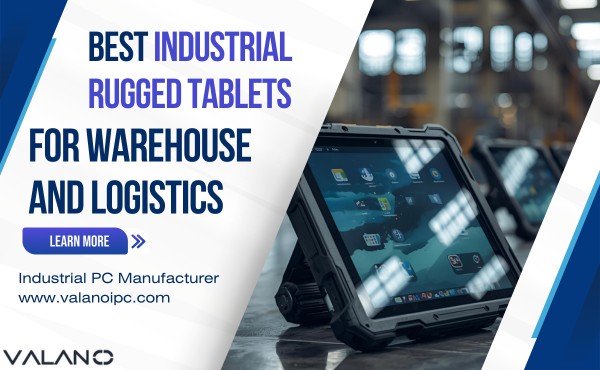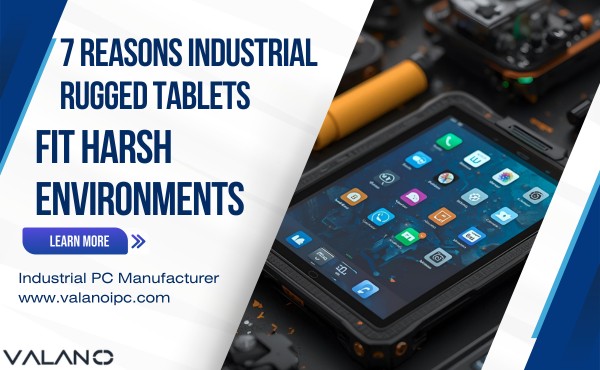
In modern intelligent transportation systems, industrial panel PCs serve as the operational backbone—processing real-time monitoring data from traffic sensors to prevent accidents, optimize flow, and enable remote management of infrastructure. These PCs perform reliably even in challenging conditions. They utilize live data from sensors, display clear maps, and integrate with various software. This enhances traffic flow and supports better decision-making.
Strong build resists shocks and vibrations.
Live data processing manages extensive sensor information.
High-brightness (500nit+) industrial panels with sunlight-readable IPS displays ensure reliable visualization of GIS traffic maps under direct glare.
Easy software connection improves overall functionality.
Understanding Intelligent Transportation Systems
Benefits of intelligent transportation systems in modern cities
Smart transportation systems help cities in many ways. They make traffic smoother, cut delays, and make roads safer. For example, Singapore reduced traffic delays by 15% using these systems. In London, road accidents dropped by 30%, showing improved safety. Better traffic control also saves money lost to congestion, which costs $9.1 billion yearly in some places. These systems also clean the air by cutting car pollution.
Benefit | Statistic |
|---|---|
Traffic Congestion | 15% fewer traffic delays in Singapore |
Road Safety | 30% fewer road accidents in London |
Economic Impact | $9.1 billion lost due to traffic jams |
Air Quality | Cleaner air from fewer emissions |
Role of technology in reducing congestion and improving safety
Technology helps fix traffic problems and make roads safer. Smart systems use tools like adaptive signals to improve traffic flow. These signals change based on live data to reduce jams. AI tools, like Currux Vision, watch traffic and people to keep roads safe. ANPR technology tracks cars and spots busy areas, helping manage traffic better. These tools also speed up emergency responses and make roads safer for all.
Adaptive signals cut crashes by 5%.
AI tools improve traffic and watch for pedestrians.
ANPR spots traffic jams and helps with rules.
Environmental impact and emission reduction through ITS
Smart transport systems help the environment. They cut traffic jams, saving fuel and lowering pollution. Cars idle less, which means cleaner air. These systems also make public transport easier to use with live updates and better routes. Fewer cars on the road mean less pollution. Smart systems improve city travel and help fight climate change.
Applications of Industrial PCs in Intelligent Transportation Systems

Traffic management and real-time optimization
Industrial PCs help manage traffic in smart cities. They process data from sensors and cameras to improve traffic flow. These systems use live data to adjust traffic lights and reduce jams. For example, adaptive signals using industrial PCs can cut traffic by 20%. This makes travel faster and reduces delays.
Industrial PCs are also great for predicting traffic patterns. They run complex programs to help city planners improve roads. Built to last, these PCs work well outdoors without interruptions.
Vehicle monitoring, predictive maintenance, and data collection
Industrial PCs are excellent for tracking vehicles and preventing breakdowns. They use IoT sensors to check engine health, tire pressure, and fuel use. This helps fleet managers fix problems before they get worse.
Industrial PCs process data quickly for better maintenance.
They collect sensor data to show how vehicles are performing.
AI tools find problems early and alert mechanics.
Their tough design works well in rough conditions for constant monitoring.
Using industrial PCs lowers repair costs and keeps fleets running smoothly. This approach saves time and boosts performance.
Passenger information systems and real-time updates
Passenger systems with industrial PCs make travel easier. They give live updates on buses, trains, and flights. Travelers get accurate info about delays and arrival times. This reduces waiting and improves satisfaction.
Passenger systems provide live updates for travelers.
They shorten wait times and improve the travel experience.
More people want these systems because they work well.
Industrial PCs with clear screens show info even in bright sunlight. They connect easily with communication systems for accurate updates.
CCTV surveillance for enhanced safety and security
Industrial PCs are key for CCTV in smart transport systems. They process video from cameras at stations and intersections. This improves safety by allowing quick responses to problems.
Case Study | Description |
|---|---|
La Samaritaine | Improved security with advanced video systems. |
Springfield College | Increased safety for students using live camera feeds. |
Cape May County | Managed 600 cameras for 24/7 area-wide monitoring. |
Miami International Airport | Used smart tools for better incident handling. |
Erste Group Bank AG | Secured offices with video and analytics systems. |
These examples show how industrial PCs improve safety. They handle high-quality video, making surveillance effective and reducing risks.
Reducing Traffic Accidents Through Edge Computing
Industrial panel PCs directly impact modern road traffic safety management by:
• Analyzing real-time feeds from intersection cameras to detect near-miss incidents (reducing accidents by up to 22% according to ITS America)
• Automatically triggering dynamic warning signs when sensors detect speeding or reckless driving
• Storing critical video evidence for accident investigation with tamper-proof encryption.
Support for autonomous vehicles and transportation automation
Industrial PCs are vital for self-driving cars and automation. They process data from sensors, cameras, and GPS to guide vehicles safely. They also help cars communicate with roads and other vehicles.
Built tough, industrial PCs handle bumps and temperature changes in vehicles. They work well with advanced software for smooth integration. By supporting automation, industrial PCs make travel safer and more efficient.
Key Features of Rugged Industrial PCs for Intelligent Transportation Systems

Durability and resistance to harsh environments
Rugged industrial PCs are made to handle tough conditions. They work well in extreme heat, cold, or vibrations. Even if dropped or hit, they keep running smoothly. Regular computers would fail in such situations.
Did you know? Rugged PCs go through hard tests to prove their strength. These tests mimic real-life challenges like bumpy rides or sudden temperature shifts.
Test Type | Description |
|---|---|
Vibration testing | Checks how PCs handle constant shaking during transport or use. |
Thermal cycling | Tests how PCs react to big temperature changes. |
Drop and impact testing | Ensures PCs survive falls or hits, important for all devices. |
Accelerated aging tests | Speeds up aging to predict how PCs will perform over time. |
Humidity and environmental testing | Tests if PCs resist damage from moisture or rust. |
Immersion testing | Checks if PCs stay waterproof against liquids and dust. |
These tests make sure rugged PCs can handle smart traffic and automation needs.
Real-time data processing and connectivity for dynamic systems
Smart transport needs fast data processing. Industrial PCs analyze huge data quickly, in milliseconds. This helps with tasks like controlling traffic lights or avoiding accidents.
Benchmark | Description |
|---|---|
Real-time Processing Latency | Processes data in milliseconds, perfect for self-driving cars. |
Connectivity Options | Dual SIMs keep internet steady, even in bad networks. |
Data Collection Capabilities | Tracks vehicle info like speed and engine health remotely. |
Predictive Maintenance | Uses data to predict and fix problems early. |
Real-time Decision Making | Quickly reacts to changes by analyzing data on the spot. |
These features help industrial PCs keep traffic systems running smoothly.
Software compatibility and integration flexibility
Industrial PCs work with many types of software. They connect easily to systems like self-driving cars or traffic control platforms. This makes them adaptable to different needs.
Robots adjust to changes, improving system flexibility.
Automated systems like conveyors link easily with industrial PCs.
Custom designs use math models for better performance.
This adaptability makes industrial PCs key to modern transport systems.
Security features and power supply stability for uninterrupted operations
Security and steady power are vital for transport systems. Rugged PCs have strong security to block cyberattacks. They also ensure power stays stable during important tasks.
Tip: Choose PCs with MIL-STD-810 and MIL-STD-461 certifications. These ensure durability and protection from interference.
Metric | Description |
|---|---|
MIL-STD-810 | Protects against shocks, vibrations, and temperature changes. |
MIL-STD-461 | Stops interference from other electronic devices. |
Environmental Testing | Ensures PCs work well in extreme conditions. |
With these features, industrial PCs provide safe and reliable support for modern traffic systems.
Industrial PCs are important in smart transportation systems. They link cars, traffic lights, and devices for better traffic control. They analyze live data to improve roads and fix vehicles. New tech like IoT and 5G will make them even better. These tools will make travel safer, cut traffic, and change how we get around.







